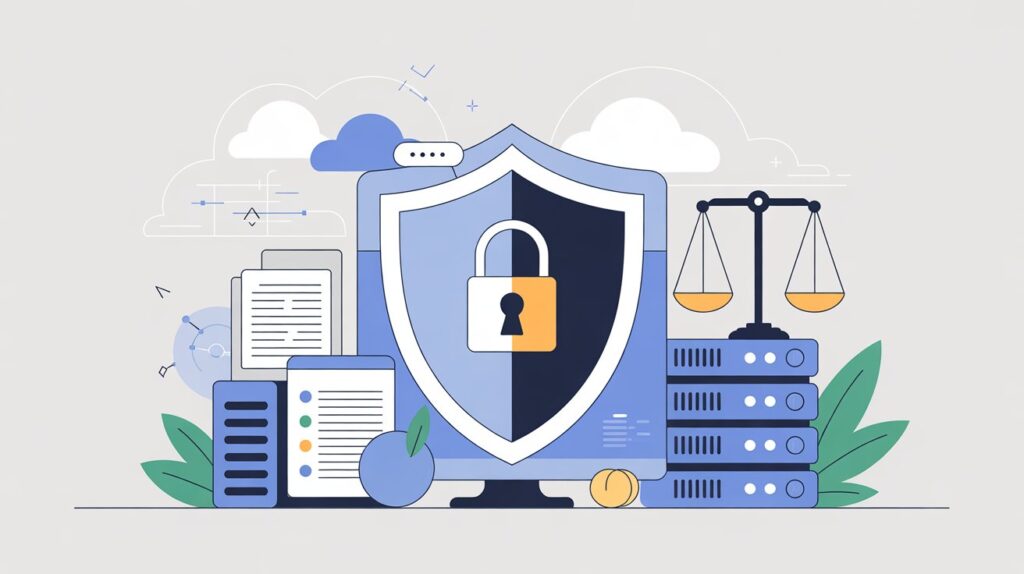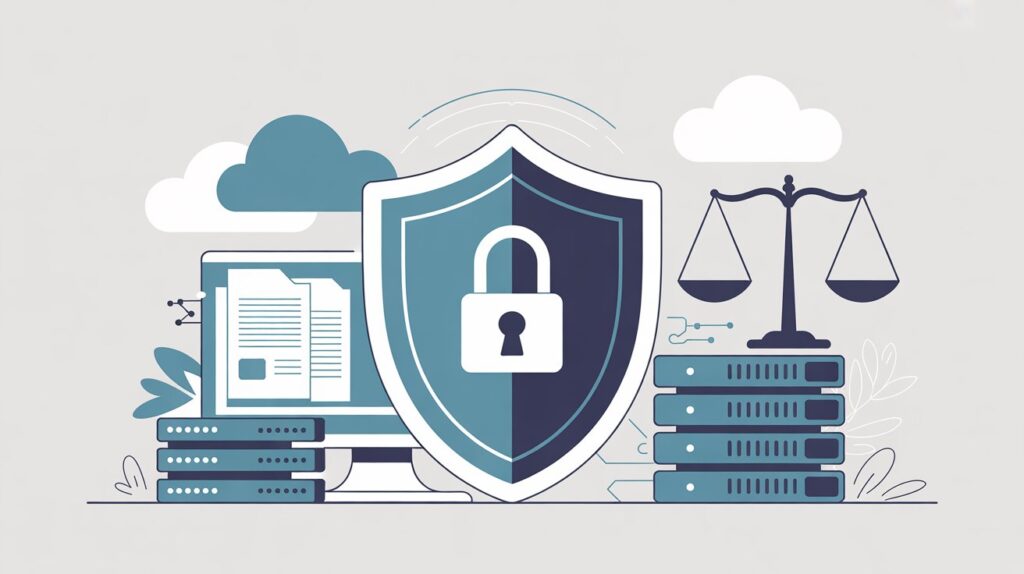Cyberattacks have become one of the most severe and costly risks facing organizations today. Data breaches, ransomware incidents, phishing campaigns, and denial-of-service attacks can cause immense financial damage, loss of sensitive data, reputational harm, and legal complications. Traditional insurance policies such as general liability or property insurance do not adequately address these risks, which leaves organizations exposed. That is why Cybersecurity Insurance: What It Covers & Costs has become a vital safeguard for companies of all sizes and industries.
This guide will provide an in-depth look at cybersecurity insurance, explaining what it covers, what it excludes, how much it costs, and how businesses can evaluate and select the right policy. By the end, you will understand not only the mechanics of cyber liability insurance but also how to leverage it alongside cybersecurity best practices to protect your organization.
What Is Cybersecurity Insurance?
Cybersecurity insurance, often called cyber liability insurance or data breach insurance, is designed to protect businesses against financial losses related to cyber incidents. Unlike traditional insurance, which covers physical damage and general business liability, cyber insurance is tailored to digital threats and information security risks.
There are two primary categories of coverage:
- First-party coverage: Protects the insured company directly for expenses it incurs after a cyberattack.
- Third-party liability coverage: Protects against claims from external parties affected by a breach.
Why It Matters Today
The rapid shift to cloud computing, remote work, and interconnected digital ecosystems has expanded the threat surface for businesses. Cybercriminals target companies of all sizes, and many small businesses mistakenly assume they are not a target—only to discover too late that hackers view them as low-hanging fruit.
In fact, according to recent global studies, the average data breach cost exceeded $4.5 million in 2024, with recovery times and fines steadily increasing. Cyber insurance does not prevent these events, but it ensures that organizations have the resources to recover financially and operationally.
Why Businesses Need Cybersecurity Insurance
Many executives still wonder whether cyber insurance is worth the cost. The reality is that businesses cannot fully eliminate cyber risk regardless of how robust their defenses are. Even with advanced firewalls, encryption, and monitoring, no system is foolproof. Insider errors, third-party vendor vulnerabilities, and zero-day exploits all present risks that are difficult to anticipate.
Key Benefits of Cyber Insurance
- Financial Protection: Covers direct losses such as data recovery costs, ransom payments, or business interruption losses.
- Regulatory Support: Helps pay for fines and legal representation during investigations into non-compliance with laws such as GDPR, HIPAA, or CCPA.
- Litigation Defense: Provides coverage for lawsuits from affected customers, business partners, or regulators.
- Reputation Management: Funds public relations campaigns and crisis management to rebuild trust after a breach.
- Operational Continuity: Ensures businesses can resume operations faster by providing funds for recovery and interim solutions.
Without insurance, companies must absorb these costs on their own, which can lead to bankruptcy or long-term reputational harm.
What Does Cybersecurity Insurance Cover?
Coverage varies by provider and policy, but generally, cyber insurance covers both first-party and third-party liability events.
First-Party Coverage
- Data Breach Response
- Forensic investigation of the breach.
- Notification costs for customers, employees, and stakeholders.
- Credit monitoring and identity protection services.
- Business Interruption
- Compensation for lost revenue due to downtime.
- Costs for renting or setting up temporary systems.
- Payment for employee overtime during recovery.
- Cyber Extortion & Ransomware
- Ransom payments to restore encrypted data.
- Hiring negotiation experts for ransomware incidents.
- Legal and compliance support during extortion attempts.
- Digital Asset Restoration
- Repair or recovery of corrupted data and software.
- Rebuilding affected databases or systems.
- Public Relations & Crisis Communication
- Hiring communication consultants to handle press inquiries.
- Managing customer outreach campaigns to rebuild confidence.
Third-Party Liability Coverage
- Regulatory Fines and Investigations
- Legal defense costs when regulators investigate.
- Payment of fines and penalties (where insurable by law).
- Customer and Vendor Claims
- Coverage for lawsuits filed by customers or partners whose data was compromised.
- Legal settlements and court awards.
- Network Security Liability
- Coverage for damages caused by malware spreading to third parties.
- Compensation for system outages affecting other businesses.
Case Example
Imagine a mid-size e-commerce company hit by ransomware. Hackers demand $200,000 in Bitcoin to release encrypted data. The attack also causes three days of downtime, costing the company $300,000 in lost sales. Additionally, 50,000 customer records are exposed, requiring notifications and credit monitoring. Without cyber insurance, the company faces over half a million dollars in direct losses. With cyber insurance, most of these costs—including ransom payment, forensic investigation, downtime compensation, and legal defense—are covered.
What Cybersecurity Insurance Doesn’t Cover
Policies are not all-encompassing. Knowing what is excluded helps businesses avoid unpleasant surprises.
- Reputational Harm: Long-term loss of customer trust not tied to financial costs is rarely covered.
- Future Profit Loss: Insurers generally cover immediate business interruption but not future revenue declines.
- Nation-State Attacks: Attacks linked to governments may be excluded under “act of war” clauses.
- Insider Malice: Deliberate malicious actions by executives or employees often fall outside coverage.
- Infrastructure Failures: Power outages or unrelated technical malfunctions are not covered.
- Known Vulnerabilities: Claims resulting from pre-existing, unreported weaknesses may be denied.
How Much Does Cybersecurity Insurance Cost?
Premiums vary widely based on several factors. Costs have risen in recent years due to the surge in ransomware claims and high-profile data breaches.
Average Pricing Ranges
- Small businesses: $1,000–$7,500 per year.
- Mid-sized organizations: $15,000–$50,000 annually.
- Enterprises: $100,000+ depending on risk exposure and coverage.
Factors That Influence Premiums
- Company Size: Larger revenue = higher risk exposure.
- Industry Sector: Finance, healthcare, and e-commerce face higher premiums.
- Data Sensitivity: Handling credit cards, health records, or financial details increases costs.
- Cybersecurity Posture: Insurers reward strong defenses with reduced premiums.
- Claims History: Past breaches or insurance claims raise premiums.
- Coverage Amount: Higher limits and lower deductibles increase costs.
Real-World Example
A law firm with sensitive client data may pay $12,000 annually for $2 million in coverage, while a small retailer with limited data exposure might only pay $2,500 annually for a $1 million policy.
The Cyber Insurance Underwriting Process
Insurers do not issue policies blindly. They assess each applicant’s risk profile.
Steps in Underwriting
- Risk Assessment Questionnaire: In-depth survey about cybersecurity policies, infrastructure, and controls.
- Security Audits: Independent verification of practices such as encryption, backups, and access controls.
- Vendor Analysis: Evaluation of third-party risks within the supply chain.
- Compliance Checks: Ensuring adherence to data protection laws.
Organizations with poor cybersecurity may be denied coverage or charged extremely high premiums. By contrast, companies that demonstrate resilience may receive discounts and favorable terms.
Filing a Claim: The Process
- Immediate Notification: Contact the insurer quickly after discovering an incident.
- Evidence Collection: Submit logs, reports, and forensic findings.
- Insurer Investigation: The provider validates the incident and costs.
- Resolution & Payout: Approved expenses are reimbursed within policy limits.
Delayed reporting or incomplete documentation is one of the most common reasons for claim denials.
Choosing the Right Cyber Insurance Policy
When shopping for a policy, businesses should:
- Evaluate Needs: Assess what kind of data and operations need protection.
- Compare Providers: Look at coverage, exclusions, and premiums.
- Understand Policy Language: Review fine print to avoid surprises.
- Consider Sublimits: Ensure ransomware or regulatory coverage has sufficient limits.
- Check Reputation: Work with insurers known for efficient claims handling.
Best Practices for Reducing Premiums
- Deploy multi-factor authentication (MFA).
- Encrypt sensitive data both at rest and in transit.
- Train employees to recognize phishing attempts.
- Conduct penetration tests annually.
- Maintain off-site and cloud-based backups.
- Develop and test incident response plans.
- Document compliance with industry standards (e.g., SOC 2, ISO 27001).
These steps not only reduce risk but also demonstrate to insurers that your organization is a responsible candidate for coverage.
The Future of Cybersecurity Insurance
Cyber insurance is still a developing market. Expect these trends:
- AI-Powered Risk Assessment: Insurers using artificial intelligence for real-time risk evaluation.
- Expanded Policy Options: Inclusion of coverage for IoT, supply chain, and cloud-based risks.
- Premium Inflation: Rising costs due to frequent ransomware claims.
- Global Regulation Impact: Increasingly strict rules requiring proof of cyber insurance in certain industries.
- Bundled Services: Insurance packages combined with cybersecurity tools and monitoring.
FAQs on Cybersecurity Insurance: What It Covers & Costs
1. Is cybersecurity insurance mandatory?
No, it is not legally mandatory in most industries, but many organizations—especially in finance, healthcare, and government contracting—require it to meet compliance or vendor requirements.
2. What types of cyber incidents does insurance usually cover?
Policies typically cover ransomware attacks, data breaches, phishing scams, business interruption, digital asset recovery, and regulatory fines (where allowed by law).
3. How much does cybersecurity insurance cost for small businesses?
Small businesses can expect to pay between $1,000–$7,500 per year, depending on their size, industry, and data sensitivity.
4. Does cybersecurity insurance cover insider threats?
Most policies exclude deliberate malicious actions by employees, but they may cover accidental mistakes such as misconfigured systems or data mishandling.
5. Can cyber insurance replace cybersecurity tools and training?
No. Insurance is meant to complement—not replace—strong cybersecurity defenses. Insurers often require businesses to demonstrate good security practices before approving coverage.
6. Are ransomware payments reimbursed by insurers?
Yes, many policies cover ransom payments, but insurers may require businesses to involve law enforcement or negotiate through approved experts.
7. Which industries benefit the most from cyber insurance?
Finance, healthcare, education, retail, and technology sectors benefit greatly due to their reliance on sensitive customer and financial data.
Conclusion
In today’s digital-first business landscape, cyberattacks are no longer a matter of “if” but “when.” The financial and reputational fallout from a single breach can devastate even the most well-prepared organizations. Cybersecurity Insurance: What It Covers & Costs provides businesses with a financial safety net, helping them recover from ransomware, data breaches, and regulatory fines while protecting their long-term stability.
However, insurance is only one piece of the puzzle. Companies must continue to invest in preventive security measures—such as employee training, multi-factor authentication, and data encryption—to reduce risks. The strongest defense combines robust cybersecurity practices with the right insurance policy, ensuring businesses can respond, recover, and thrive in the face of evolving cyber threats.












